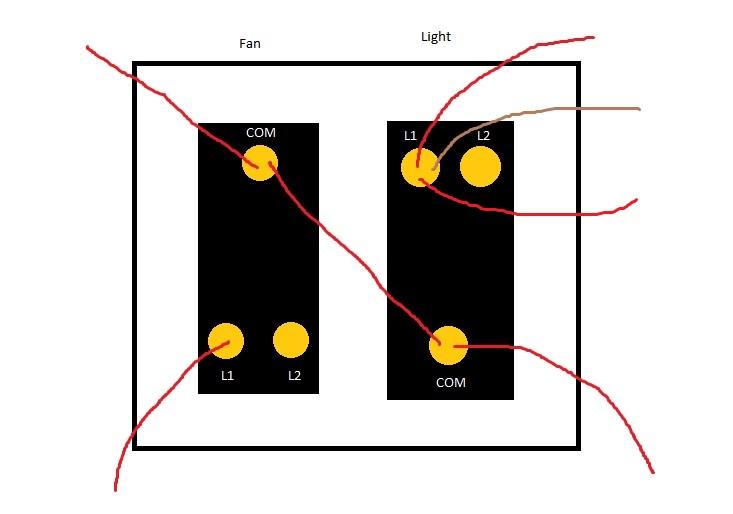Hi, I could do with some help on what maybe an easy fix.
I have recently moved into a house. I have an issue with the bathroom setup between the lights and electric underfloor heating.
The underfloor heating seems to be wired into a double switch that controls the lights and an extractor fan. The fan operated on it own but when the lights are turned on/off the floor heating also turns on/off with it.
This is rather pointless as the floor is tiled and above an external porch and is therefore freezing most the year, and it takes a good 15 mins for any heat to be felt once switched on. I would like the heating to be powered all the time as I think it was designed to be as you can set your own schedule from the control panel. Every time it is turned off at the moment the schedule is reset.
I have taken the switch off the wall and had a look at the wiring. I have attached a very rough drawing of the rear of the switch. It is not clear to me which wire is coming from where to determine what they are connected to. There are five red wires connected to the switch, another red wire connected between the two COMs and a brown wire coming into one of the Live points.
Is this an easy fix and just a mistake when it was fitted? Should it be connected to the light switch, or is this dangerous?
I should point out the underfloor heating has its own fuse switch on the wall which also comes on and off with the lights.
Thanks for you help
[/img]
I have recently moved into a house. I have an issue with the bathroom setup between the lights and electric underfloor heating.
The underfloor heating seems to be wired into a double switch that controls the lights and an extractor fan. The fan operated on it own but when the lights are turned on/off the floor heating also turns on/off with it.
This is rather pointless as the floor is tiled and above an external porch and is therefore freezing most the year, and it takes a good 15 mins for any heat to be felt once switched on. I would like the heating to be powered all the time as I think it was designed to be as you can set your own schedule from the control panel. Every time it is turned off at the moment the schedule is reset.
I have taken the switch off the wall and had a look at the wiring. I have attached a very rough drawing of the rear of the switch. It is not clear to me which wire is coming from where to determine what they are connected to. There are five red wires connected to the switch, another red wire connected between the two COMs and a brown wire coming into one of the Live points.
Is this an easy fix and just a mistake when it was fitted? Should it be connected to the light switch, or is this dangerous?
I should point out the underfloor heating has its own fuse switch on the wall which also comes on and off with the lights.
Thanks for you help
[/img]



